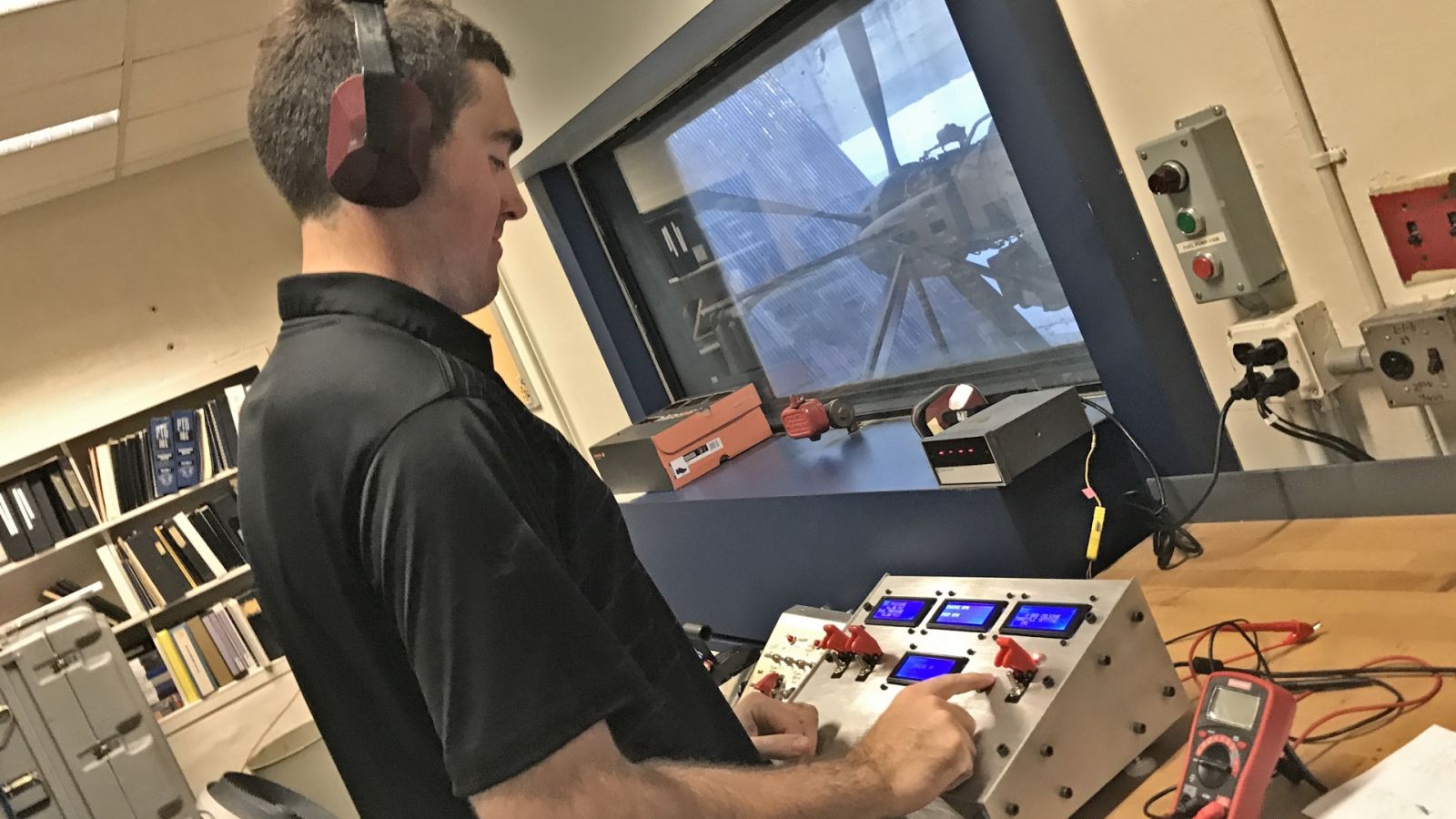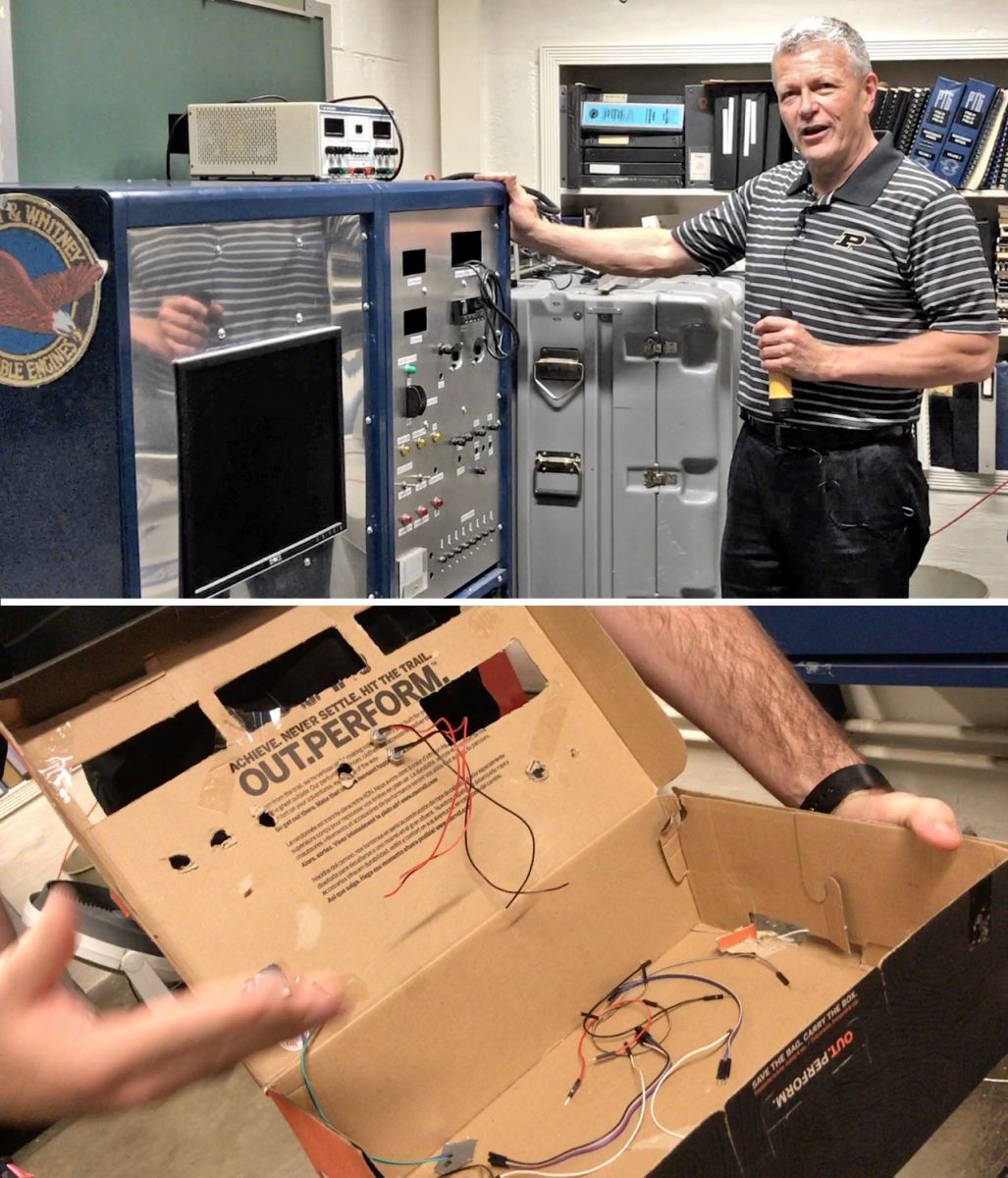
 Brock Gillum, an undergraduate student working in the School of Aviation and Transportation Technology’s engine test laboratory, developed a portable control box prototype for a jet engine in a shoebox.
Brock Gillum, an undergraduate student working in the School of Aviation and Transportation Technology’s engine test laboratory, developed a portable control box prototype for a jet engine in a shoebox.
Gillum is studying for a Federal Aviation Administration (FAA) airframe and power plant certification under Mike Davis, assistant professor of aeronautical engineering technology in the Purdue Polytechnic Institute. Gillum designed and built the prototype as a summer project while working in the engine test lab Davis supervises. The portable control box and remote microcontrollers are designed to control the lab’s Pratt and Whitney PT6 advanced turboprop jet engine. Students successfully tested the remote controller in August.
Having portable control equipment is a first for the aeronautical engineering technology program’s engine test lab, according to Davis. The new controller replaces older equipment “which pretty much took up a wall’s worth of space,” he said. “We discussed the possibility of upgrading the PT6 test cell, and Brock pretty much took off with the idea.”
“I thought we could hook up an Arduino, which is an open-source microcontroller,” said Gillum. “We could apply it to the engine, add some safety factors, and make it better in general.”
Gillum examined the engine’s existing controllers and documentation, studying the existing connections and learning exactly what they needed to control, including fuel, throttle, operating temperatures, and other factors. He prioritized using existing cables and harnesses when possible to avoid purchasing unnecessary new parts.
“From there, we put together a list of everything we needed to build to make it work,” said Gillum. “We discovered most connections could be routed through relays, providing digital control for things which were previously only manually controlled.”
Digital controls allow the new system to automatically shut down the engine if it exceeds programmed maximums for speed and temperature. “This microcontroller gives us much better, more precise control, and it’s also more user-friendly,” Gillum said.
Gillum used a cardboard shoebox to house the first prototype of the portable control box. Later prototypes were built in a small metal enclosure.

Davis is in the process of modernizing the aeronautical engineering technology program’s curriculum and research labs. “Modern aerospace manufacturers and test facilities in both military and civilian operations utilize state-of-the-art remote sensing and control monitoring. The notion of the ‘digital twin,’ the ability to show a real-time display of engine component health and performance, is being rapidly perfected. That’s where we’re headed here,” he said.
Gillum’s achievement sets the stage for future projects, according to Davis.
“Our student design teams can now begin to imagine, rapidly model, develop and test solutions to some of the critical challenges in powering the global aviation fleet’s next generation,” said Davis. “We want them to be as fluent with the science behind next-generation jet engines as they are in mechanical operation and flight performance.”
Davis said the shoebox controller proved the concept, and he plans to guide student teams in the implementation of more digital technologies in the engine test lab.
“Depending on their size, engines are priced from $6 million to $20 million each,” Davis said. “That cost generates tremendous demand for graduates who are able to simulate lifecycles and predict parts failures.”
Video:
Davis describes future plans for improving the engine test cells and Gillum fires up the engine using his microcontroller in the video, below:
